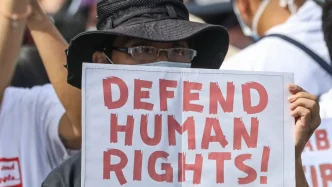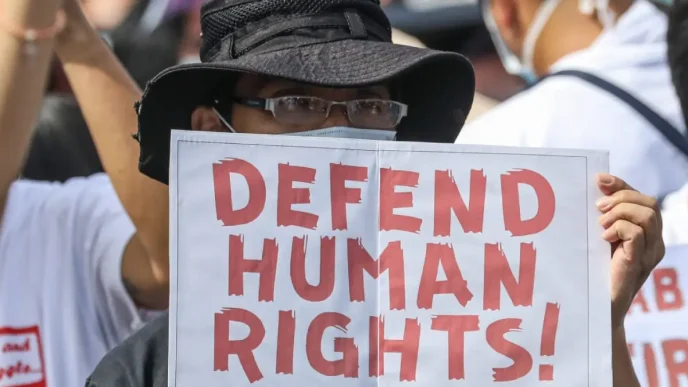A simmering border dispute between Cambodia and Thailand has flared once again, with former Cambodian Prime Minister and current Senate President Hun Sen calling for a definitive resolution through the International Court of Justice (ICJ) in The Hague. The renewed tensions follow a deadly clash on May 28, 2025, in the Mum Bei area of Preah Vihear province’s Choam Ksan district, where a brief exchange of gunfire left one Cambodian soldier dead. Both nations have since deployed additional troops to the contested “Emerald Triangle” region, raising fears of further escalation in a historically volatile border zone.
Historical Claims and a Call for International Arbitration
The Emerald Triangle, a mountainous area where the borders of Cambodia, Thailand, and Laos converge, has long been a point of contention, particularly between Cambodia and Thailand. Hun Sen, a dominant figure in Cambodian politics for decades, has publicly reiterated that the area belongs to Cambodia, citing historical presence and internationally recognized maps. In a recent statement, he urged both nations to present their claims before the ICJ, emphasizing the need for a permanent solution.
“If things are still unclear, Cambodia and Thailand could agree to bring this issue to the International Court of Justice in The Hague, using internationally recognised official maps (not self-drawn maps meant to claim land), to end the matter” said Hun Sen. He framed the proposal as a means to “put out the fire completely for the happiness and unity of future generations” and prevent recurring conflicts.
Hun Sen’s call for arbitration echoes past efforts to resolve disputes over nearby territories, such as the Preah Vihear temple, which was awarded to Cambodia by the ICJ in 1962, though subsequent skirmishes persisted. The Cambodian leader also referenced the Paris Peace Agreement of 1991, noting that Cambodian troops have been stationed in the Emerald Triangle since before that accord, predating a 2000 memorandum of understanding between the two countries. He suggested that the United Nations Transitional Authority in Cambodia (UNTAC), which oversaw the country’s transition in the early 1990s, could serve as a historical witness to Cambodia’s claims.
Recent Violence and Escalating Tensions
The latest incident on May 28, 2025, has intensified an already fraught situation. According to Cambodian accounts, the clash at Mum Bei resulted in the death of one soldier, though details remain sparse and unconfirmed by independent sources. Both Cambodia and Thailand have bolstered their military presence along the border in response, a move that risks further confrontations in an area marked by dense jungle and unclear demarcations.
Hun Sen has accused Thai “extremists” of exacerbating tensions through inflammatory comments on social media, particularly on his own Facebook page, where he claims insults and offensive remarks have been posted with the intent to damage bilateral relations. He warned that such actions could provoke military conflict, a concern amplified by historical precedents of border skirmishes leading to broader hostilities.
Adding to the friction, Hun Sen rejected demands from some Thai individuals for Cambodia to withdraw its troops from the disputed area. “Cambodia cannot withdraw its troops from its own territory just because Thailand demands it” he asserted. He recalled a similar standoff in 2011 with then-Thai Prime Minister Abhisit Vejjajiva, during which he refused to pull Cambodian forces from the Preah Vihear temple area, insisting that Thai troops were the invaders who should retreat unconditionally.
Thai Perspective and Counterclaims
On the Thai side, military spokespersons have disputed Hun Sen’s claims over the Emerald Triangle, though specific statements remain limited at this stage. Thai authorities have historically argued that parts of the border region fall under their sovereignty, often citing differing interpretations of colonial-era maps drawn by French authorities during Cambodia’s time as a protectorate. The lack of a mutually agreed-upon border demarcation in the rugged terrain of the Emerald Triangle has perpetuated ambiguity and conflict.
Thai officials have yet to publicly respond to Hun Sen’s proposal for ICJ arbitration as of June 2, 2025. However, past reluctance to involve international courts—beyond the Preah Vihear ruling—suggests that Bangkok may approach such a suggestion with caution. Domestic political pressures in Thailand, including nationalist sentiments, have often complicated efforts to negotiate or concede on border issues, a dynamic that could shape the current response.
Personal Symbolism and Historical Context
In a gesture laden with symbolism, Hun Sen shared photographs from a 2009 visit to the disputed area, where he and his wife were pictured in camouflage alongside Cambodian troops. He argued that the images, taken over 15 years ago, provide clear evidence of Cambodia’s longstanding control over the territory. “There’s no way I could have worn a military uniform and taken photos on Thai or Lao territory in that area” he said, noting that he had hosted Lao soldiers at a ceremonial hall in the region during that visit, though the structure later burned down.
The Emerald Triangle dispute is not merely a territorial issue but one steeped in national pride and historical grievances. For Cambodia, the region represents a broader struggle to protect sovereignty against perceived encroachments, a narrative shaped by centuries of territorial losses to neighboring powers. For Thailand, border disputes often intersect with domestic politics, where hardline stances can bolster political capital among nationalist constituencies.
Regional Implications and the Path Forward
The renewed tensions come at a time when Southeast Asia is grappling with broader geopolitical challenges, including maritime disputes in the South China Sea and internal conflicts in Myanmar. While the Cambodia-Thailand border issue may appear localized, its potential to disrupt regional stability should not be underestimated. Both nations are members of the Association of Southeast Asian Nations (ASEAN), which prioritizes non-interference and dialogue but has often struggled to mediate intra-regional disputes effectively.
Hun Sen’s accusation that the recent clash is part of a “recurring scheme to grab land from Cambodia” driven by lower-level Thai commanders and extremist groups introduces a speculative element that, if unverified, could inflame rhetoric on both sides. While no independent evidence currently supports claims of a coordinated land-grab effort, the perception of such intent underscores the deep mistrust that pervades this longstanding rivalry.
International observers have noted that resolving the Emerald Triangle dispute through the ICJ, as Hun Sen proposes, could set a precedent for handling other contested borders in the region. However, the process would require mutual consent, a willingness to abide by the court’s ruling, and a commitment to de-escalation in the interim—conditions that have proven elusive in past negotiations.
Public Sentiment and Bilateral Relations
Beyond the political and military dimensions, the dispute carries significant implications for people-to-people relations. Cambodia and Thailand share deep cultural and economic ties, with thousands of citizens crossing the border daily for trade, tourism, and family connections. Incidents like the May 28 clash risk souring these interactions, particularly if social media rhetoric, as Hun Sen alleges, continues to stoke animosity.
In Cambodia, public sentiment often aligns with the government’s firm stance on territorial integrity, a position reinforced by historical narratives of resilience against external threats. In Thailand, opinions vary, with some advocating for compromise and others supporting a hardline approach. The role of social media in amplifying these divisions cannot be ignored, as online platforms become battlegrounds for competing nationalisms.
A Fragile Stalemate
As troops remain stationed on both sides of the border, the immediate priority for Cambodia and Thailand is to prevent further violence. Confidence-building measures, such as joint patrols or temporary de-militarization of the disputed zone, could provide breathing room for diplomatic talks. Yet, history suggests that such measures are often temporary fixes, overshadowed by domestic political imperatives and entrenched positions.
Hun Sen’s invocation of the ICJ offers a potential pathway to resolution, but its success hinges on mutual political will—a commodity in short supply amid the current standoff. For now, the Emerald Triangle remains a flashpoint, a reminder of unresolved histories in a region striving for unity. As both nations weigh their next moves, the question looms: will dialogue prevail, or will the border once again become a battleground?
















